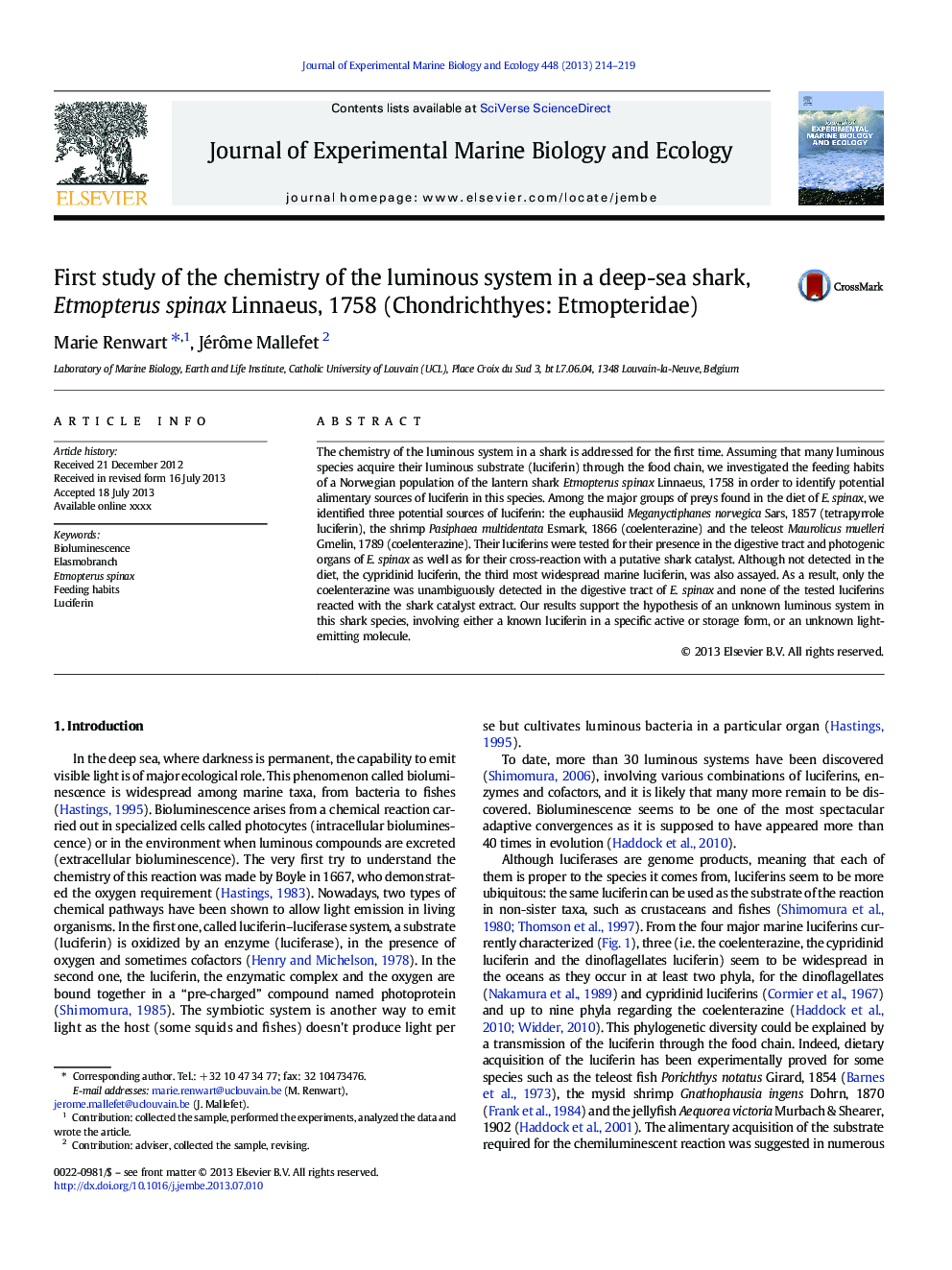| Article ID | Journal | Published Year | Pages | File Type |
|---|---|---|---|---|
| 6304392 | Journal of Experimental Marine Biology and Ecology | 2013 | 6 Pages |
Abstract
The chemistry of the luminous system in a shark is addressed for the first time. Assuming that many luminous species acquire their luminous substrate (luciferin) through the food chain, we investigated the feeding habits of a Norwegian population of the lantern shark Etmopterus spinax Linnaeus, 1758 in order to identify potential alimentary sources of luciferin in this species. Among the major groups of preys found in the diet of E. spinax, we identified three potential sources of luciferin: the euphausiid Meganyctiphanes norvegica Sars, 1857 (tetrapyrrole luciferin), the shrimp Pasiphaea multidentata Esmark, 1866 (coelenterazine) and the teleost Maurolicus muelleri Gmelin, 1789 (coelenterazine). Their luciferins were tested for their presence in the digestive tract and photogenic organs of E. spinax as well as for their cross-reaction with a putative shark catalyst. Although not detected in the diet, the cypridinid luciferin, the third most widespread marine luciferin, was also assayed. As a result, only the coelenterazine was unambiguously detected in the digestive tract of E. spinax and none of the tested luciferins reacted with the shark catalyst extract. Our results support the hypothesis of an unknown luminous system in this shark species, involving either a known luciferin in a specific active or storage form, or an unknown light-emitting molecule.
Related Topics
Life Sciences
Agricultural and Biological Sciences
Aquatic Science
Authors
Marie Renwart, Jérôme Mallefet,
